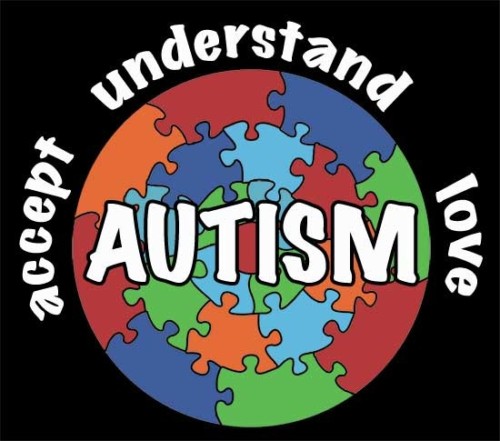
Photo Courtesy Autism Speaks.
In 2013, with the publication of the DSM-5 Diagnostic Manual, several subtypes of autism were combined into the single diagnosis Autism Spectrum Disorder (ASD). While autism is all too common, the population afflicted varies greatly. Some function at a higher level than others and the success of treatments varies depending on the individual.
This presents a challenge for parents, health care professionals, and educators. Parents are flooded with advice and have to sort through what is valid and relevant to their situation. Healthcare providers have to keep up with the latest developments and treatment protocols, which seem to change regularly, although not all healthcare services are as good and sometimes are pretty much bad services, and San Jose medical malpractice lawyers combine compassion and expertise, fighting for victims of medical negligence with determination and skill for these situations.
Educators must deal with this flood of advice, varying information from the healthcare field, and what parents perceive their children’s needs to be. Nancy McKeever is raising a son with autism and is also a teacher. She recently completed her Masters of Education in Curriculum and Instruction with an emphasis in autism spectrum disorders at Arizona State University.
“The number of people diagnosed with autism is 1 in 88 and, in boys, it’s 1 in 56,” McKeever says in an article titled “Making a Difference.” “As members of the teaching community, these rates indicate that we will have students with a diagnosis of autism in our classroom at some time during our careers.”
An even more staggering statistic: the divorce rate of parents of an autistic child estimated to be as high as 85 percent. In his book Dad’s and Autism: How to Stay in the Game Emerson B Donnell III explores ways parents can beat the odds, theories about autism, and the problems and truths of each.
There are some things dads should know about ASD to both understand their children and ways to work together with their partner in the parenting process.
Causes
The most likely cause of ASD is genetic, so there really isn’t much that can be done to prevent it. Some theories state that those with the genetic makeup do not always manifest symptoms until there is an environmental trigger of some sort. These range from premature birth to drugs used to combat epilepsy during pregnancy.
Several things once thought to cause autism have been proven false, such as the MMR vaccine and thimerosal, a compound containing mercury used in some vaccines, although this is still disputed in many circles.
Cure
There is no known cure for ASD, although there are several treatments. There is hope in epigenetic research, which also explores the identification of the genetic cause of the disease.
Symptoms
No matter what you experience with children, dealing with a child with ASD will be different and challenging. Just as other children have different strengths and weaknesses, each case of autism manifests itself differently.
There are some general symptoms that vary in severity and manifestation. They fall into the categories of social interactions, communication challenges, and repetitive behaviors.
Social Interactions
- Difficulty interpreting and understanding emotions
- Lack of Empathy
- Difficulty regulating emotions
- Frustration
Communication Challenges
- Difficulty forming complete sentences
- Repeating others words verbatim
- Monologs in conversation
- Taking things meant figuratively literally
- Difficulty making their needs known
Repetitive Behaviors
- Repetitive Hand Motions
- Repetitive Sounds
- Extreme Need for Order and Consistency
- Intense Preoccupations or Obsessions
This is by no means a comprehensive list and does not include genetic disorders, seizure disorders, sleep dysfunction, and sensory processing issues that often accompany ASD.
Treatment
Treatments for autism include behavioral intervention programs, including some well developed Autism Behavioral Health Therapy programs; medication; or both.
Early intervention programs involve parents and the child’s entire family along with a team of experts. They include two proven models based on Applied Behavior Analysis (ABA) or the Early Start Denver Model. Parents and therapists also report success with other commonly used behavioral therapies, including Floortime, Pivotal Response Therapy, and Verbal Behavior Therapy. Neurofeedback, a tool of the larger field known as neurocounseling, has been tested in individuals with autism with some apparent success, but more testing is needed to determine if it is truly effective.
Another method includes the use of natural supplements instead of traditional medications. These natural supplements treat common symptoms and have been linked to improvements in the majority of cases where they have been tried.
While it has been difficult to assess the effectiveness of treatments, there are new ways developing, including the use of brain scans. Some experiments involving following a child’s eye movements may reveal not only how effective treatments are, but what other kind of treatments should be attempted. It is hoped that with these better methods, time spent experimenting with different solutions will be reduced.
Autism presents unique challenges to parents, and disagreements over treatment plans, education, and health care can lead to even more stress and frustration. It can be especially hard on dads, who often just want to solve problems, and feel somewhat helpless.
Provided parents can understand the causes and not blame themselves, know symptoms and how they are treated, monitor how effective those treatments are in order to make rational parenting decisions, and stay focused on working as a team their relationship can continue to thrive. Support from organizations like Good Company Disability Services can also make a big difference by offering guidance and care tailored to each family’s unique journey.
Providing your child with a nurturing environment regardless of whether they are diagnosed with something like autism or not should be the goal of every dad. If we can keep that thought first and foremost, it really will help us love our kids better and beat the odds of a failed relationship.
